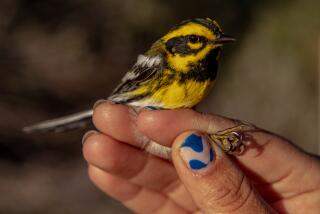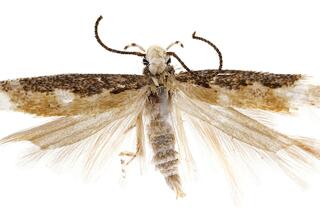Blowing Out the Names of George, Mitch
- Share via
WASHINGTON — Adieu, Georges. Bye-bye, Mitch.
Hurricane-battered residents of Central America and the Gulf of Mexico were happy to see those storms end last year. And now, because of the death and damage they caused, the names could soon be retired.
The decision will be made by the hurricane committee of Regional Association IV of the World Meteorological Assn., which meets in late March to coordinate forecast and warning activities for this year’s hurricane season.
“I’m pretty sure two names, Georges and Mitch, from last year will be retired,” Arthur J. Dania, director of the weather service of Netherlands Antilles and Aruba, said. He heads the regional association.
That would bring to 49 the total names retired over the years, starting with Carol, which battered North Carolina, New York and parts of New England in 1954.
Mitch claimed thousands of lives in Central America when it stalled off the east coast last October, pouring record rains on Honduras and Nicaragua. The resulting floods were so powerful that maps must be redrawn to reflect the land’s new contours.
Georges blasted across parts of the Caribbean in September, striking Puerto Rico, the Virgin Islands and Cuba before crossing the Florida Straits to Key West. It then skirted the west coast of Florida and made landfall near Biloxi, Miss. It killed more than 600.
Replacement names will be chosen at a meeting of the WMO regional association, which represents 25 countries from Canada to Colombia and Venezuela.
Hurricane naming is but a small part of the group’s work, Dania stressed, noting it helps national weather services share information and forecasts and issue warnings to protect people.
But storm names are usually the first contact with hurricanes for ordinary people, who hear the names on radio or television or read them in newspapers.
For the Atlantic Basin, six sets of names are used in rotation. That means Mitch and Georges would be returning in 2004 if they were not retired and replaced.
This year’s tropical storms will reuse the list from 1993, beginning with Arlene and, if there are enough storms, running through Wilma.
Infamous retired hurricane names include Hazel, 1954; Camille, 1969; Agnes, 1972; Frederic, 1979; Hugo, 1989; Bob, 1991; Andrew, 1992 and, most recently, Hortense, 1996.
Hurricanes, technically known as tropical cyclones, are given names to prevent confusion when more than one storm is under way.
This was first done by an Australian forecaster, who used the names of politicians early in this century. That provided the opportunity for such weather reports as “Jones causing great distress” or “Smith wandering aimlessly.”
Military forecasters took over the naming during World War II, usually using the names of their wives or girlfriends. For two years the military phonetic alphabet was used--Able, Baker, Charlie, etc.--but in 1953 the U.S. Weather Bureau returned to women’s names.
After women complained about the practice, the list was changed in 1979 to alternate male and female names.
Although Dania said he has heard no proposals to change the current practice in his region, 14 countries of the Western North Pacific and South China Sea are taking a new approach starting next year.
More to Read
Sign up for Essential California
The most important California stories and recommendations in your inbox every morning.
You may occasionally receive promotional content from the Los Angeles Times.













